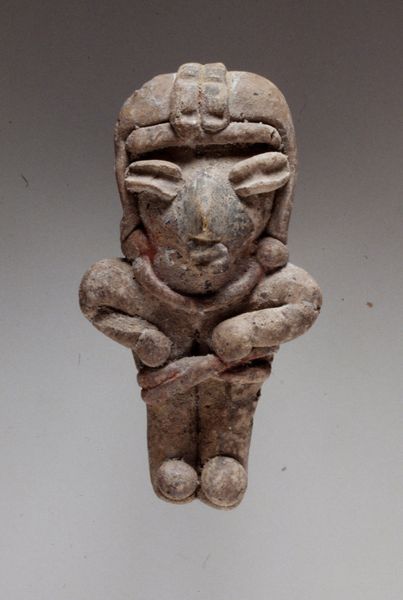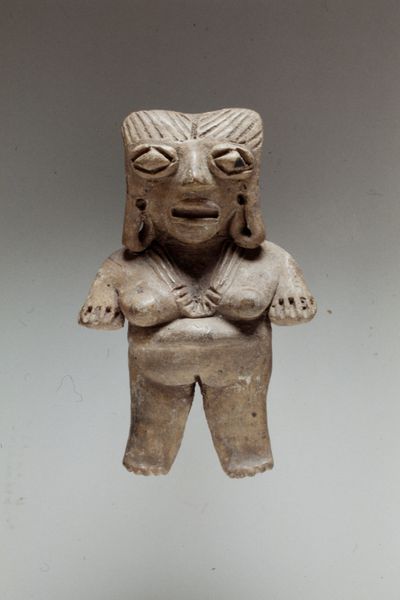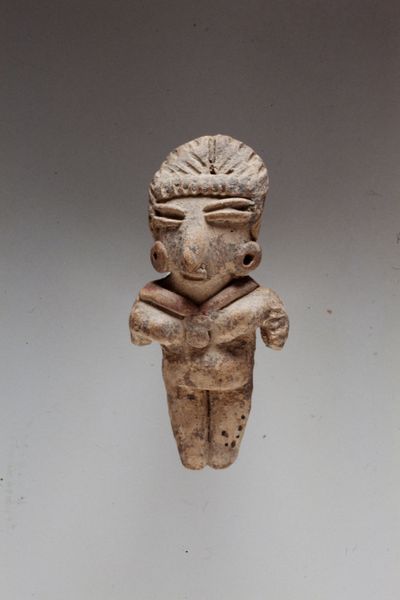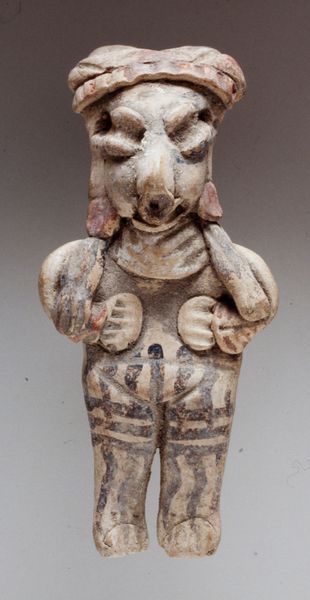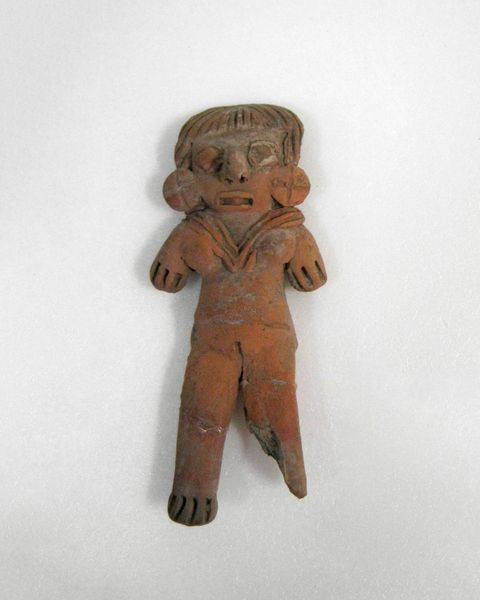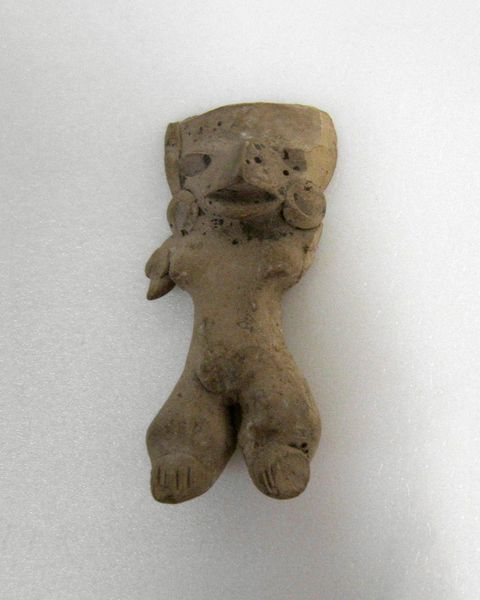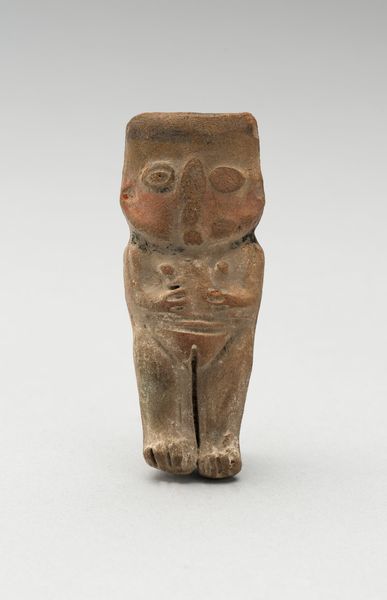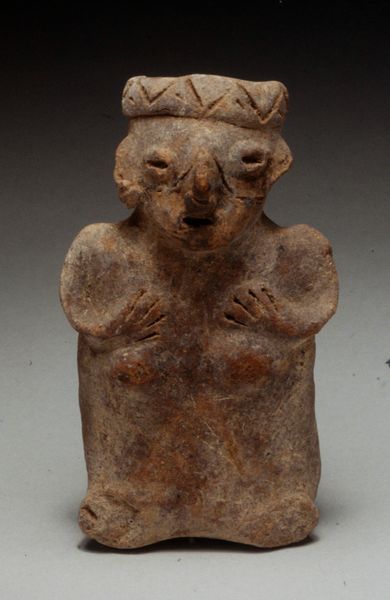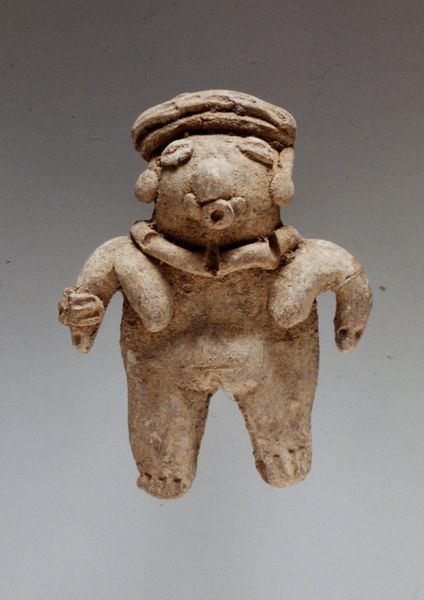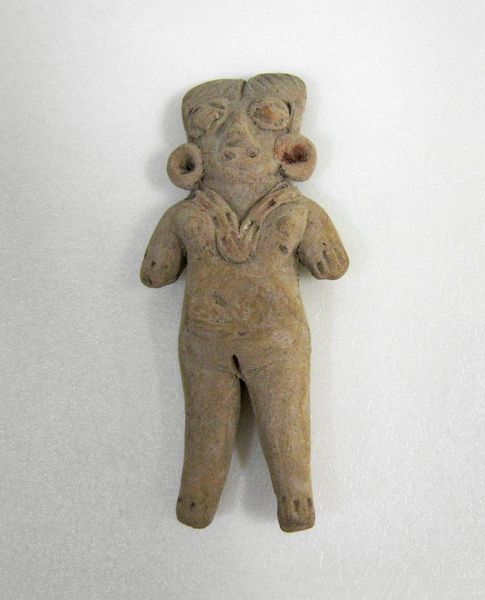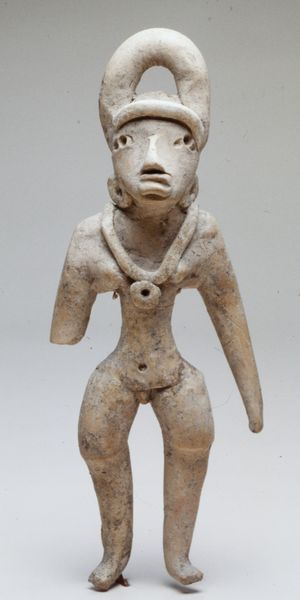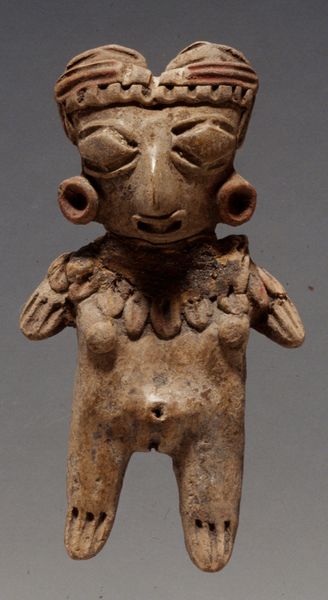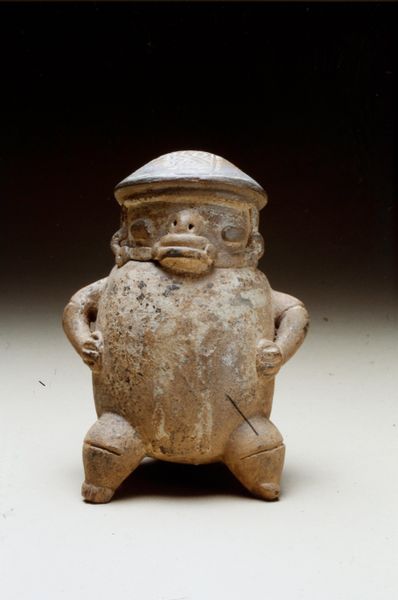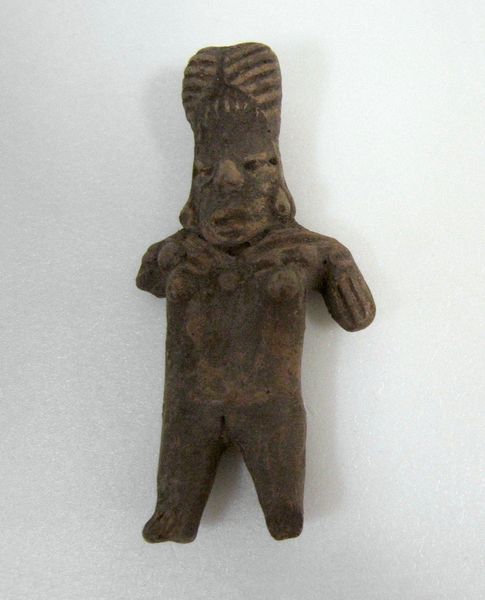
ceramic, earthenware, sculpture
#
sculpture
#
ceramic
#
figuration
#
earthenware
#
sculpture
#
nude
#
indigenous-americas
Dimensions: 2 1/4 x 1 in. (5.7 x 2.54 cm)
Copyright: Public Domain
Curator: Here we have a captivating sculpture entitled “Standing female figure,” crafted around 250-300 C.E. by the Chupícuaro people. It's currently held here at the Minneapolis Institute of Art. Editor: What strikes me first is its intimacy. It's nude, small, seemingly unadorned save a bold necklace—it feels simultaneously ancient and incredibly personal. There's a directness to the representation. Curator: Indeed. The Chupícuaro culture flourished in what is now the Mexican state of Guanajuato. Archaeological finds suggest that figurines like this were often buried with the dead, suggesting their connection to rituals, funerary practices, and perhaps beliefs about the afterlife. Editor: So, this small earthen figure was part of larger systems—rituals concerning death, for example, in which female figures perhaps played an important part. Was she intended to represent a specific individual, do we know? Curator: We can’t know for sure if it's meant to be a specific individual or an archetype, a representation of ideal femininity, fertility, or even status, signified by the elaborate necklace. We must consider the public role of the woman. Editor: Absolutely. It is hard to view the body neutrally, today—a nude female body signifies very different things based on historical period and who has the power to display it. Her unashamed nudity does carry a sort of pre-colonial, and therefore potentially revolutionary, significance. The gaze here feels…different. Curator: It does complicate the usual dynamics of display, doesn’t it? One must ask: Who was the intended audience and what purposes would she serve in their social order? I find this sort of nuance critical for understanding how society functions—how public images are constructed and mobilized for specific purposes. Editor: Right. And in the museum, as well. This piece encourages a deep dive into pre-colonial worldviews, connecting the object to broader themes of identity, gender roles, and the politics of representation. Curator: A poignant reminder of the complexity embedded within even seemingly simple forms. Editor: Agreed. Hopefully, visitors leave thinking about what has changed and, equally important, what remains constant about human representation.
Comments
No comments
Be the first to comment and join the conversation on the ultimate creative platform.
